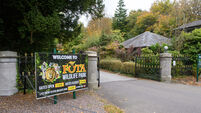No place for tunnel vision
At the time, the experts reckoned the 600-metre long Jack Lynch Tunnel, which runs under the river Lee from Mahon to Dunkettle, would take up to 18,000 vehicles a day out of Cork city.
But over the last decade, the double-bore four-lane tunnel on the N25, administered by the National Roads Authority (NRA) and managed by Cork City Council, has become one of the state’s busiest road arteries — handling up to 50,000 vehicles per day at weekends, rising to an incredible 68,000 vehicles every weekday.













